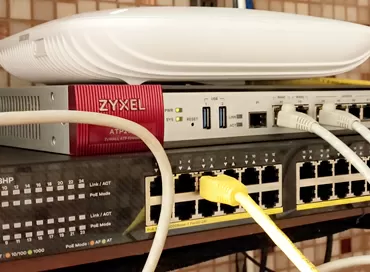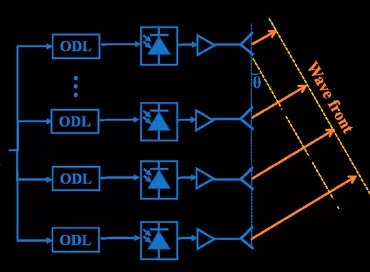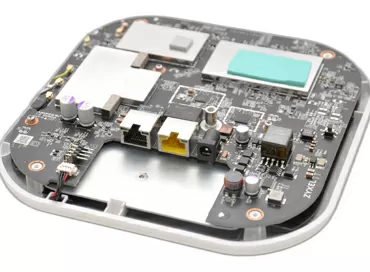Review of IP-Com EW9 + EP9x2 Enterprise Mesh System
With the growth of penetration of IoT devices, the demand for stable coverage from Wi-Fi systems also increases: it is clear that you cannot achieve a stable wireless connection from a smart light bulb or sensor, and it is easier to install an additional access point, sometimes even with reserve. The penetration of IoT into business processes will lead to the fact that integrators will be forced to provide Wi-Fi coverage where it was not planned due to several sensors or "smart" devices.
In sales rooms, meeting rooms and conference rooms, you will probably install expensive equipment wired to the core switch of your network, but will you also bother with temperature sensors in the basement? All your setup in such places will most likely come down to network segmentation separately for people and separately for smart devices, and the requirements for speed and latency will be minimal.
For tasks where you just need good Wi-Fi coverage, and no one will bother with cabling, budget Mesh kits are used, such as those offered by IP-Com in the EW9 series. This is a set of Mesh access points of the AC1200 11ac Wave 2 standard. As befits such devices, the set can connect directly to the Internet, bypassing a router or gateway, so to work at a remote site, it only needs a wire from the provider, or better - two, since Dual WAN technology is supported. The second WAN can be your internal network if you configure static routing.
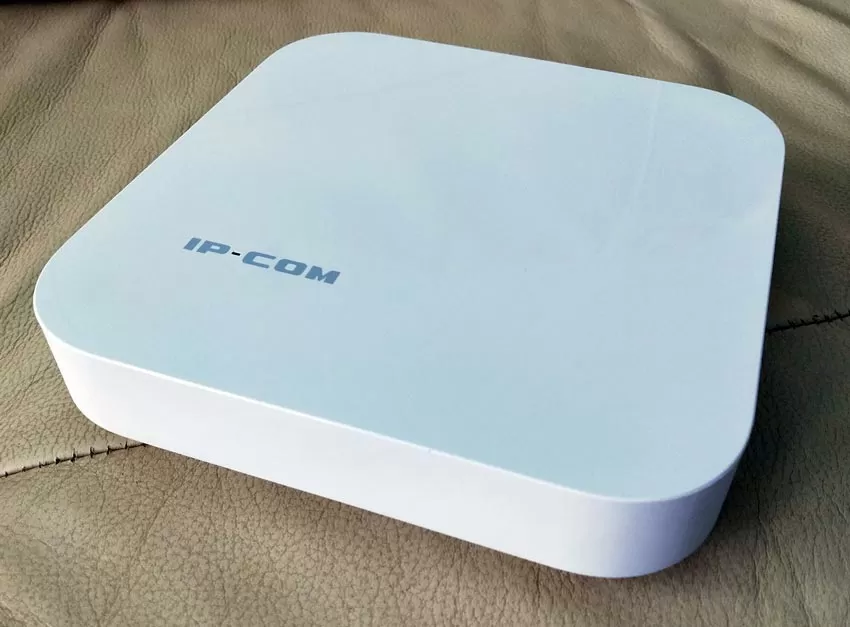
From the very beginning, IP-Com EW9 access points delight with their versatility: well, where else can you find the ability to mount on a ceiling, on a mast and even on a table in one device? Let's open one of the nodes and see what kind of antennas allow you to achieve such versatility?
Antenna group
Four planar antennas are placed along the perimeter of the case and are directed to three sides from the center of the hot spot, forming 2 spatial streams each for the 5 GHz and 2.4 GHz bands. Keep in mind that the front of the radio wave does not go perpendicular to the plane of the access points, so you do not need to hang these kits on the walls, they will not work for long-range point-to-point communication, and if you want to put them on a mast to cover the courtyard, place them power socket up.
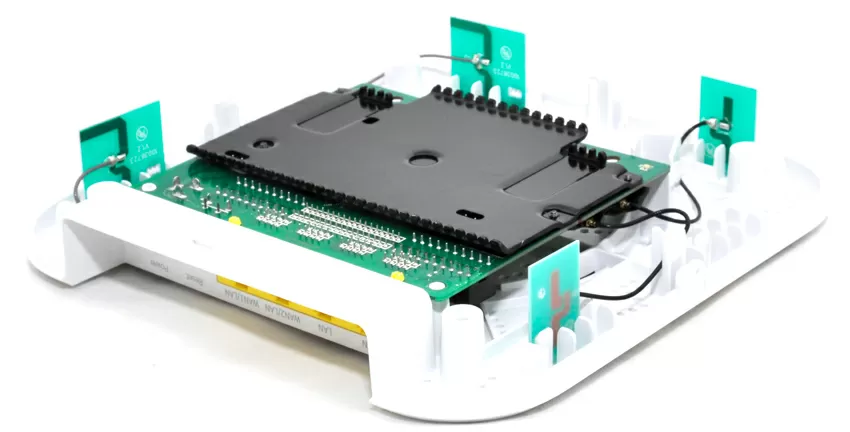
But in general, according to the configuration of the antennas, these are purely desktop devices, and the bedside table is the best refuge for them, no matter who says anything. The massive radiator also serves as a shield that protects the 5 GHz radio circuit from high-frequency interference. The 2.4 GHz module is located on the back of the board and has its own heatsink and shield.
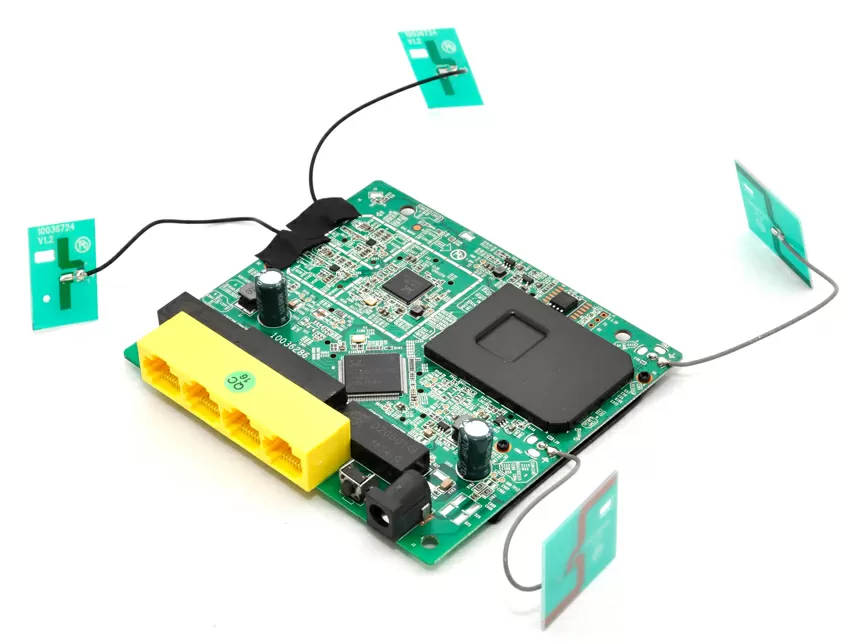
I want to note that the IP-Com AC1200 Mesh system kit is built on the EW9 and EP9 access points, which externally differ only in the presence of RJ45 ports. IP-Com EW9 has four of them, two of which can be allocated for WAN, and this device is meant as the root device in your Mesh network. The cheaper EP9 nodes do not have any ports, and are bought as repeaters to expand your Mesh network, which can total up to 9 nodes. Here I would like to remind you that in the topology of Mesh systems, weighted estimates of the "cost" of translation between nodes are used, taking into account bandwidth and latency to select the optimal network configuration. Why is it important?
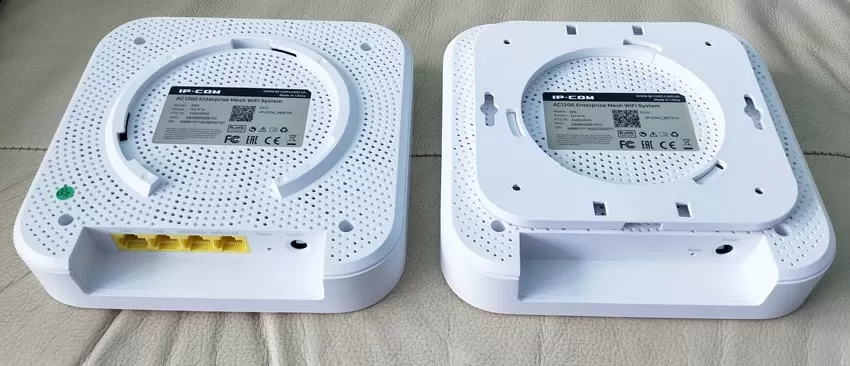
At the facility, it is likely that some hot spots will see each other, and the network will have a triangle or closed star topology. The controller will route between them, taking into account delays and bandwidth, but over time, the purity of the radio air will change, which will force the controller to make a new route between nodes, and this can happen several times per hour. An increase in the number of hotspots on one network does not always lead to an improvement in Mesh performance, and very often it is the location of nodes with Internet access that determines the speed of the entire network, but in IP-Com AC1200 you can only have one EW9 root device per network. In practice, this limits the network configuration to 3-4 hops in a straight line from the root device to the farthest one. When hops are added, the speed at the far node will drop to such a level that applications can generate network errors. And there's nothing you can do about it: budget kits are designed so that the root node is placed in the center of the object, and repeaters are placed along the periphery.
Backhaul channel
Using IP-Com AC1200, you can easily provide a wireless network to a restaurant hall, office or car service workshop, but problems will already arise with a long corridor due to the lack of a dedicated radio module for internal interconnect (backhaul channel). For this reason, for most buyers one set of three access points will be more than enough, and although in the system settings there is an option to use only a wired interconnect, in practice it is inapplicable due to the lack of network ports on the EP9.
I am assuming that the wireless channel uses a 5 GHz channel with a hidden SSID, separated by a VLAN from the general network space. This is the simplest and cheapest method of building a network, which allows even home routers to be used to mesh in a mesh. The disadvantage of such a scheme was discussed in detail above: starting from the third hop, you will begin to feel a strong decrease in speed to the root router and the Internet.
Setting
We connect IP-Com EW9 with the WAN1 port to the local network and download the IP-Com program to the smartphone to configure and manage the wireless system. All further actions will be performed only via a smartphone. For cloud-based network management via the Internet, I recommend registering an account in the program: this useful function cannot be neglected, especially if the desired WLAN network is located far from you.
Almost all settings are familiar to the system administrator, so there is no need to list them. You can create groups of users for whom access to the Internet is open or closed, make a separate guest network and configure NAT for any web services, there is a high-performance mode switch for placement in places with dozens of users connected at the same time.
Adding repeaters to the network is also done from the application: just turn on the power of the hotspot, scan the QR code on the device's case - and it appears in the list of installed ones. Do not be confused by the fact that three access points always form a triangle on the smartphone screen: the application does not display the current topology, and the triangle will be displayed even when the network stretches into a line.
Additional equipment settings are placed in the EW9 web interface, which can be connected from the LAN network. Among the interesting features I would like to note the setting of IPSec tunneling, the Dual-Wan policy (load balancing or manual client distribution) and the Captive Portal with manual mode for setting up authorization by E-Mail or SMS.
Testing and general impressions
We have in our hands a set of one EW9 and two EP9, which we combine in a straight chain with a distance of approximately 9 meters between repeaters. In the application settings, make sure that all three nodes are connected at maximum speed.
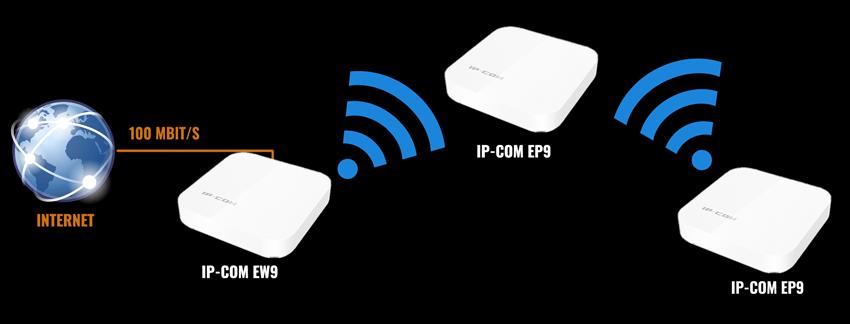
The main node is connected via a 100-megabit channel of the provider Rostelecom to the Internet, and an Oppo RX17 Neo smartphone is used as a client, connected to a 5 GHz channel with a 433 Mbps link.
|
Mesh system speed test at 5 GHz
|
EW9 connection
|
Connection to EP9 # 1
|
Connection to EP9 # 2
|
|
Average Ping on Mail.ru
|
9.5
|
8.2 |
8,1
|
|
Average Ping on Yandex.ru
|
10.5
|
12,8 |
12.62
|
|
Average Download Speed
|
82
|
78
|
57,23
|
|
Average Upload Speed
|
68
|
61 |
32.8
|
In practice, the speed corresponds to what we expect from a three-link set: on the first hop, a slight decrease in speed is within the margin of error, and theoretically it should not be at all. The speed starts to sag too much already on the second leg of the network, but for IoT devices, the more important is not bandwidth, but latency. And as we can see from the pings, it does not change, so ordinary devices, well, except for CCTV cameras with 4K resolution, can be installed on the third leg of the Mesh network.
Recommendations when ordering
IP-Com turned out to be a pretty good starting segment for those who value low price entry thresholds, easy setup and maintenance. I find it optimal to use them in a small office with open space for workstations or in order picking terminals, where wireless clients are concentrated on one side of a wall or window. In both cases, when the repeaters are located 0.6-1 m above the ground, you will get the fast and reliable Wi-Fi network you need. By purchasing a set of 3 devices (router + 2 repeaters), each of the devices costs you around 5 thousand rubles, which is comparable in price to a home router or a regular access point, and since IP-Com products are a new phenomenon in our market I recommend that you buy one or two EP9s in reserve in case you decide to expand your coverage and the devices disappear from sale.
Mikhail Degtyarev (aka LIKE OFF)
17/02.2020











